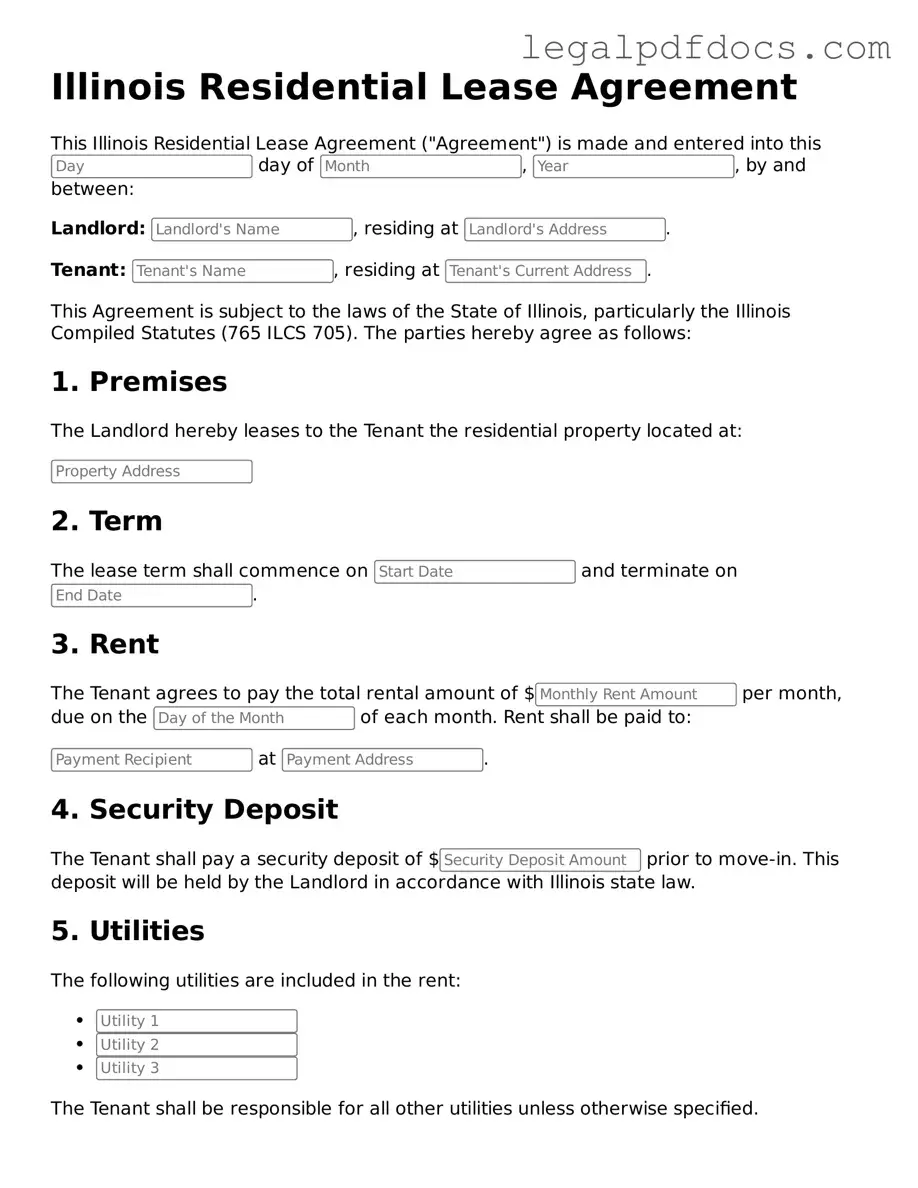Official Residential Lease Agreement Form for Illinois
The Illinois Residential Lease Agreement is a legal document that outlines the terms and conditions between a landlord and a tenant for renting a residential property. This form serves to protect the rights of both parties, ensuring a clear understanding of obligations and expectations. To begin the process, fill out the form by clicking the button below.
Open Residential Lease Agreement Editor Here
